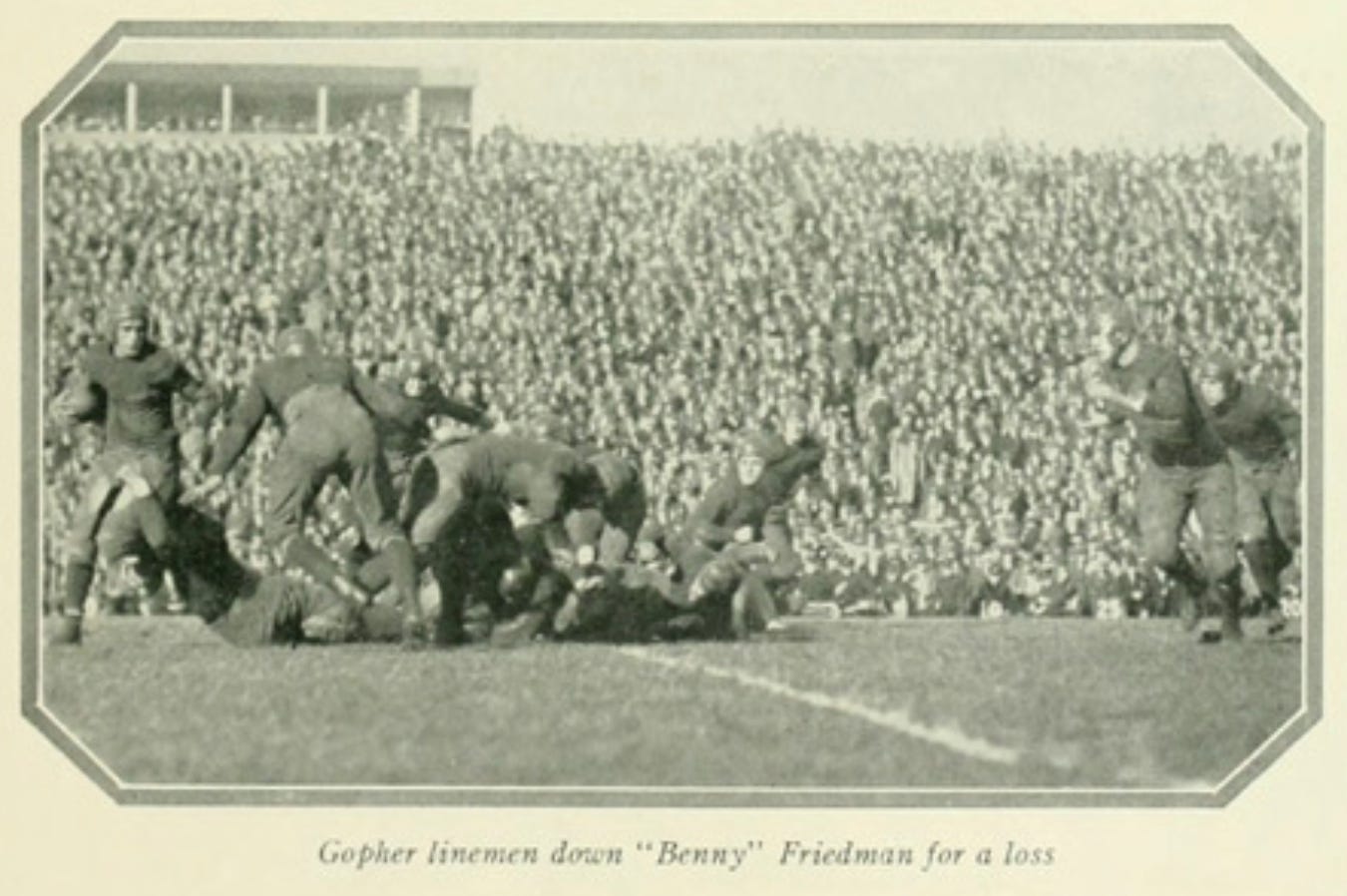Today's Tidbit... Reenacting The 1927 Little Brown Jug Game
Before the widespread availability of radio and television broadcasts of away games, one option available to hardcore football fans was to stand outside the local newspaper offices. The newspapers arranged for telephone updates from the game, and as they were received, newspaper employees shouted updates to the crowd or posted them on a scoreboard. Others sat in movie theaters or auditoriums where they simulated games using light displays or by moving small figures around a representation of a football field.
Simulations were particularly popular for rivalry games, such as the 1927 Minnesota-Michigan battle for the Little Brown Jug. Both were top teams at a time when Big Ten teams scheduled their conference games individually - just like nonconference games. The Big Ten did not handle scheduling but required teams to play four or more conference games to be considered for the championship based on win percentage. Unfortunately for Minnesota and Michigan, both their competitiveness and behavior that irritated others resulted in some Big Ten teams refusing to play either team. That left them in a pickle, and needing to play four conference games, Minnesota and Michigan agreed to play one another twice that year. (Indiana and Northwestern also played twice in 1926.)
The first of the two-game series came in Ann Arbor. Michigan dominated the first half and allowed Minnesota to threaten a bit in the second half, but the Wolverines won 20-0, so both teams had a reason for optimism after the game.

However, the most exciting events of the day did not happen in Ann Arbor but back in Minneapolis, where Gopher fans did not settle for the usual studio simulation of the game. Instead, they staged a reenactment on the field in Minnesota's Memorial Stadium, courtesy of the Gophers' freshmen team, half of whom wore maroon jerseys and the others blue. The school band, cheerleaders, and 1,500 attendees added to the odd and festive atmosphere.
Like standard simulations, the folks running the event received play-by-play updates from Ferry Field. They recorded each update and had youngsters run them onto the field, where the freshmen read the updates and reenacted the play as best they could. A reporter who witnessed the event told his readers the reenactment "...had all the appearance of a real game," but of course, that was a lie. Anyone that has ever watched a football movie knows the bulk of the "game action" appears unnatural, despite their ability to film multiple takes, so a reenactment of this sort could not have had the appearance of a real game.

Despite the Minnesota loss, the 50-cent admission for adults and the 10-cent admission for children supported a good cause, the Walter Camp Memorial Fund. Like schools across the nation, Minnesota raised money to build a memorial to Camp at the Yale Bowl following his death in 1925.
Minnesota does not appear to have performed another reenactment, so the Little Brown Jug game that wasn't likely was a one-off affair that seemed like a good idea on the drawing board but failed to pass the test on the field of play.

Football Archaeology is reader-supported. Click here to buy one of my books or otherwise support the site.


*Michigan won the first game 20-0 (and the second 7-6).
Of course it is. But this colossal realignment featuring far-flung conferences may cause a reconsideration of scheduling. But...it probably won't!!